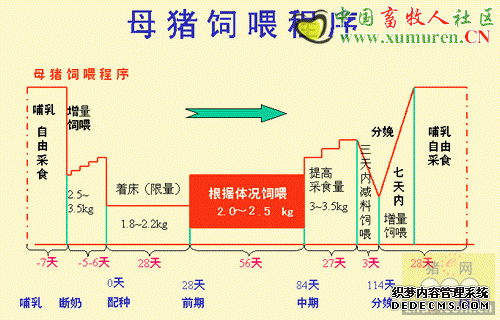Toxic baits (rodenticides). Rodenticides are pesticides designed to kill rodents. Both anticoagulant and non-anticoagulant rodenticides are available. Some non-anticoagulant rodenticides will give a quicker knockdown of a rodent population than anticoagulants, as they are effective with a single feeding and are relatively rapid in action. They may be preferred where rodents are abundant or where it is difficult to get them to accept a bait for several days in succession (as is necessary with some anticoagulants).
The most common non-anticoagulant rodenticides are bromethalin and cholecalciferol. Bromethalin results in a decrease in nerve impulses, paralysis, and death. A single dose of bait is usually lethal within 2 to 4 days. Rodents stop feeding on bromethalin baits after they have consumed a lethal dose. Thus, only relatively small amounts of this bait need to be available.
Cholecalciferol is actually vitamin D3. In massive doses this compound is toxic and because of their small size, rodents succumb to relatively small amounts. Cholecalciferol will act as a single-dose poison if a sufficient amount is consumed by a rodent in one feeding, but it will act as a multiple-dose poison if consumed in lesser amounts over several days.
Zinc phosphide has been used as a rodenticide for many years and is available in ready-to-use commercial baits. Use of zinc phosphide has declined. However, it is still an effective and useful material, and it can provide an economical and quick knock-down of a rodent population. Because "bait shyness" may develop following a sublethal ingestion of zinc phosphide, it is best not to use this active ingredient more than twice per year at a given location. "Prebaiting" with untreated bait for several days before a zinc phosphide rodenticide is offered will increase bait acceptance.
Anticoagulant rodenticides comprise about 90% of all baits used for rodent control. Anticoagulants cause death by internal bleeding, which occurs as the animal's blood loses its clotting ability and capillaries are destroyed. The active ingredients are used at very low levels, and bait shyness does not occur. All anticoagulant rodenticides are relatively slow-acting and death usually occurs 3 to 7 days following the ingestion of a lethal amount. Most anticoagulant baits cause death only after they are eaten for several days. Brodifacoum, bromadiolone, and difethialone baits are exceptions. These rodenticides can cause death following a single feeding, although the rodent may continue to feed for several days. All anticoagulants are considered to have good bait acceptance, low human hazard, and moderate to high hazard if directly ingested by swine.
When multiple-dose anticoagulant rodenticides are used, bait must be available continuously until all rodents stop feeding. This usually takes at least 2 weeks. Complete elimination of rodents is often possible with anticoagulant rodenticides. This is not usually achieved with non-anticoagulant rodenticides, and hence the anticoagulants are often used as a follow-up to other types of control.
Bait selection and placement. Rodent baits are available in several forms. Grain baits in a loose meal or pelleted form are available in small plastic, cellophane, or paper packets. These sealed "place packs" keep bait fresh and permit easy placement of the baits into burrows, walls, or other locations. Rodents gnaw into the packets to feed on the bait. When baiting, check that packets have not been pushed out of burrows by rats, as this may expose bait to non-target animals. Anticoagulant baits formulated into paraffin or wax blocks are useful, especially in damp locations, where loose grain baits would spoil quickly. As with place packs, avoid placing them where they could be reached and fed on by pigs.
Where ample feed is available to rodents, control can be improved by using baits prepared of highly-preferred foods. A particularly good bait material for house mice is canary grass seed. In many situations, mice prefer such bait to hog feed.
Water or food items of high water content are often attractive to rodents at sites where water is scarce or absent. Some anticoagulant concentrates can be dissolved in water to make a liquid bait. Even though mice require little water to survive, they will quickly accept available water baits. When water sources can be reduced or eliminated, liquid baits will provide excellent control of rats. Liquid baits also can supplement cereal baits, resulting in better control.
Proper placement of baits and the distance between them is very important. Baits must be located where rodents are living, as close to their shelter as is possible and closer than their normal food resources. For house mice, place baits no farther than 10 feet apart (preferably 6 to 8 feet). Since rats will travel farther to feed, baits can be spaced 25 to 50 feet apart. Whenever possible, however, place rat baits directly into, or very close to, rat burrows. Bait boxes or stations provide a secluded feeding area, holding ample toxic bait for nearby rodents. Bait boxes protect the bait from weather and exclude non-target animals. They should be large enough to accommodate several rodents at one time and should have at least two rodent-sized openings (1 1/2 inches for mice, 2 1/2 inches for rats). Place bait boxes next to walls (with the openings close to the wall), or near burrows and in other places where rodents are active. Clearly label all bait boxes with appropriate warnings as a safety precaution. To prevent bait boxes from being tipped over, fasten them to the floor or wall. Secure the lids to prevent unwanted access to the bait.
声明
来源:互联网
本文地址:http://farm.00-net.com/yz/zhu/5/2007-09-20/142448.html








